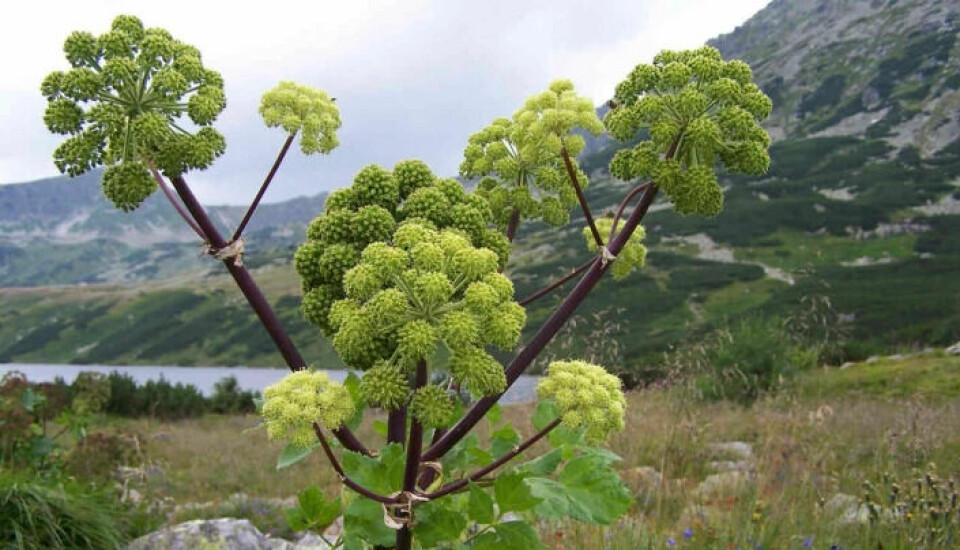
What did children eat as sweets in the old days?
Viking children chewed on plants. During World War II, children were not given any sweets at all.
A child who lived during the Viking Age – more than 1,000 years ago – never tasted sugar or any of the sweets that we eat today.
But they had other sweets. The plant Norwegian angelica, also called wild celery, was used. It tastes a little sweet, but also bitter.
Viking children might also have used resin as chewing gum, which is something people have been chewing on since the Stone Age. Resin is a sticky and thick liquid that flows out of spruce and pine trees.
If they wanted something even sweeter, they could eat honey, sweet berries and apples.

Sugar to Norway
Sugarcane is a species of grass that does not grow in Norway. That's why we didn't have sugar in Norway until the 17th century. It arrived by boat along with other, new foodstuffs such as coffee, tea, spices and cocoa.
Using sugar and cocoa, it suddenly became possible to make many kinds of sweets.
Sugar was expensive, however, so it wasn’t a part of the everyday diet.
In rich families they ate confectionery. These are small sweets that are filled with chocolate, marzipan, or fruit.
Sucked on rock sugar
Those who did not have much money could suck on rock sugar. This is a type of confection made from sugar that is hardened into lumps.
Sweets were mostly made from sugar, with different flavours added.
Drops, small round confectionary made out of boiled sugar, were available in many fruit flavours and were sold in bulk.
Caramels didn't cost that much either. It was possible to get them in all different sizes, and people could also make them at home.
Lollipops are actually a caramel or drops attached to a stick. These also existed in the old days.

The most popular chocolate
Licorice can be extracted from the licorice plant and used to flavour sweets. Licorice came in long sticks and was cut into smaller pieces. Children could then buy as many pieces as they could afford.
Marzipan is made from almonds, icing sugar and egg whites. Almonds had been coming to Norway by ship for hundreds of years. Icing sugar came during the 1800s. So then people started making marzipan. Marzipan was used in cakes, but also as sweets, especially at Christmas and Easter.
Freia was the first chocolate factory in Norway. From 1889, children could buy milk chocolate. It remains the most popular chocolate today.
The first chewing gum in Norway was Wrigley's Spearmint. The other was Toy, which came during the 1930s.
Very little sweets during the war
When Norway was occupied by Germany during WWII, there was a food shortage. There was also little sugar. People had to spend their money on regular food, and there was little left over for sweets.
But after the war, things have changed.
Now you can choose from tonnes of different types of sweets. A child from the Viking Age would not have believed their eyes.
References:
Annechen Bahr Bugge: Fattigmenn, tilslørte bondepiker og rike riddere. Mat og spisevaner i Norge fra 1500-tallet of til vår tid (Food and eating habits in Norway from the 16th century to present day), Cappelen Damm, 2019.
National History Museum: Søtsaken fra vikingtiden som forsvant – og gjenoppsto (The sweet from the Viking Age that disappeared – and reappeared), 2021.
———
Translated by Alette Bjordal Gjellesvik.
Read the Norwegian version of this article on ung.forskning.no
------





































